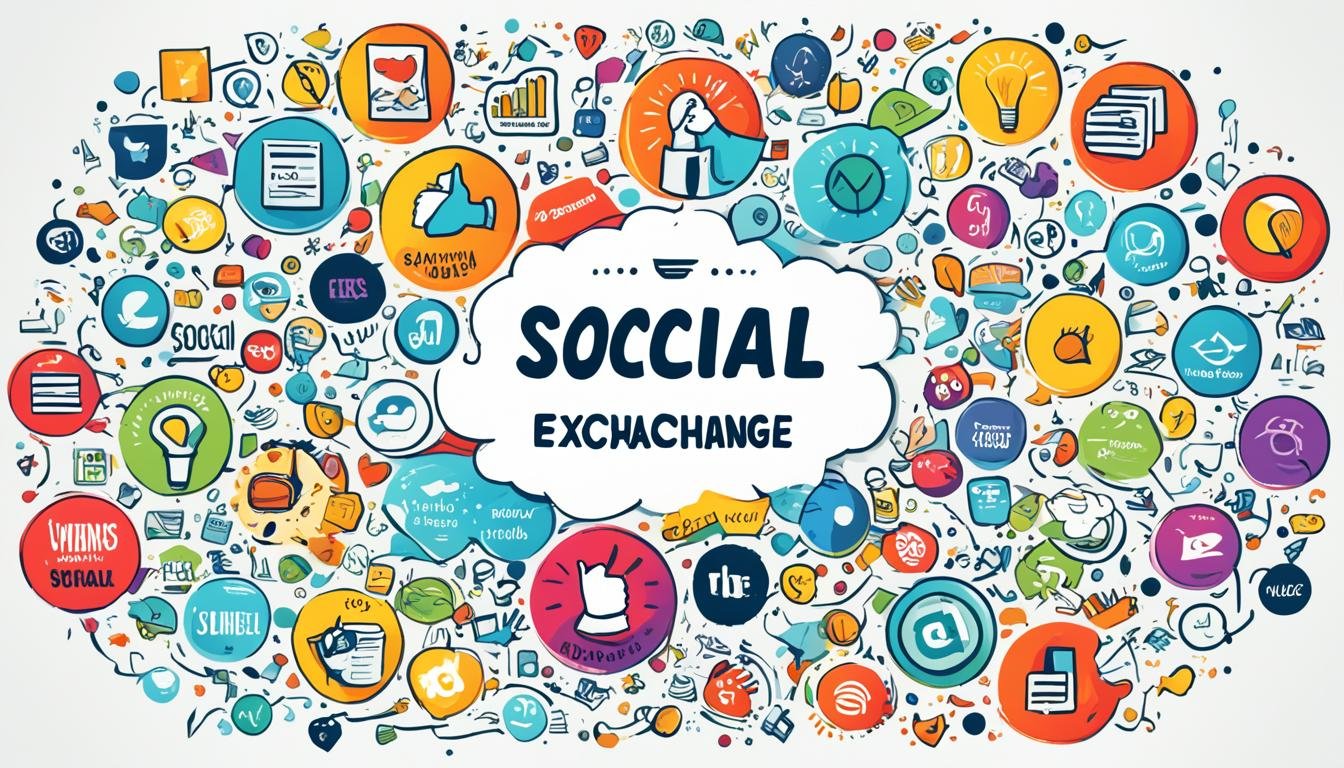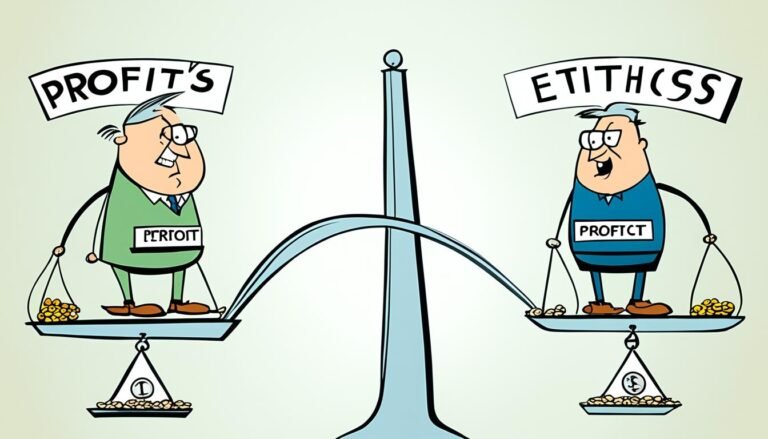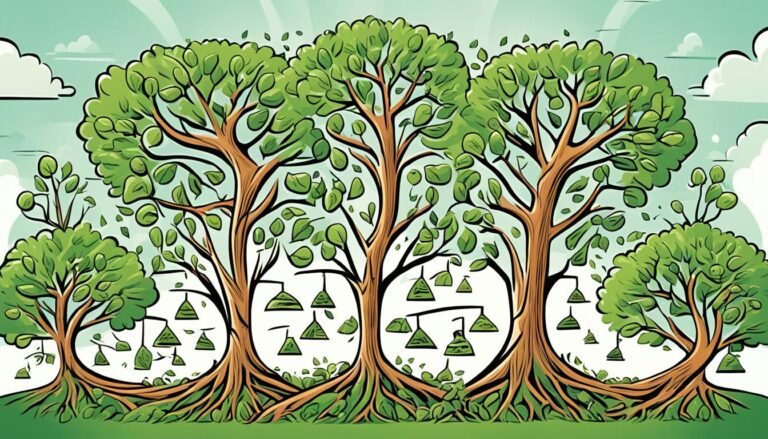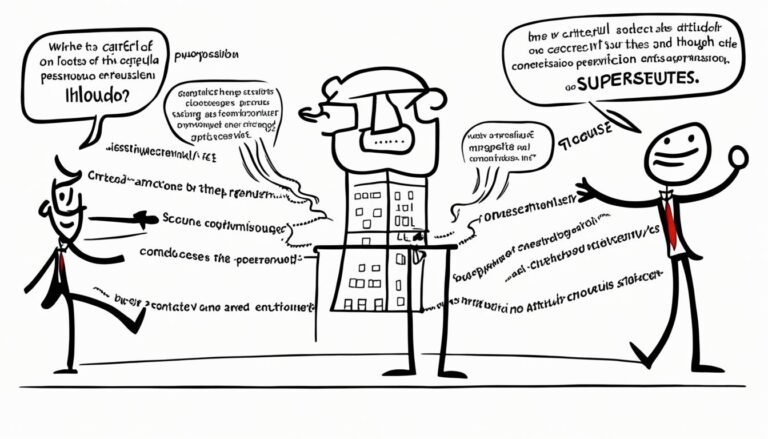Case Study: How a Brand Applied the Social Exchange Theory
Did you know humans look for rewards and try to avoid punishments in relationships? This idea is key to social exchange theory. It’s not just for personal ties but also big in marketing and getting customers involved. Think about a brand that uses this theory to make its marketing better—how could it change customer loyalty and interest?
Social exchange theory says people act to get the most benefits with the least cost. They think about what they might gain or lose before they act. Since George Homans introduced it in 1958, it has changed how brands see what customers do. It makes their marketing smarter and more effective.
Key Takeaways
- Social exchange theory centers on a cost-benefit analysis framework to understand relationship dynamics.
- Applied effectively, the theory can significantly enhance brand-customer relationships.
- Brands using this approach analyze rewards and costs to boost customer engagement.
- Essentials of the strategy include incentives and calculated exchanges.
- Success is gauged through metrics and logical evaluations, not just emotional responses.
Introduction to Social Exchange Theory
George Homans introduced social exchange theory in 1958. It looks at how people try to get the most benefit from their relationships. This can be in personal, work, or buying things. It helps us understand why people act the way they do, especially when it comes to brands and customers.
Understanding the Basics
Social exchange theory is all about weighing the good and bad in our social interactions. People stick with others if they feel the benefits are worth it. These benefits can be things like money, time, or love. They also look at their past experiences and what else is out there.
Everyone wants things to be fair in their relationships. This idea of fairness is key to the theory. It’s also something marketing folks really get. Knowing how a brand uses this theory can help make better connections with customers.
Importance in Marketing and Consumer Relationships
In marketing, this theory shows how important it is to know what customers want. Brands that use it can meet customer needs better, making customers happier and more loyal. For example, knowing people like to get something back can help brands build stronger ties with customers and workers.
This theory also helps in managing teams and customer service. Marketers who understand it can make strategies that keep customers coming back. They make sure their products or services are worth the cost.
The Brand’s Initial Strategy and Market Analysis
Launching a brand starts with deep consumer behavior analysis. Amazon uses market research to know what people want and value. They got 383 valid samples from three cities, focusing on tablet PC users. This gave them a 89% response rate.
This detailed consumer behavior analysis helps match the brand with what the market wants. Tools like SmartPLS2.0 and SPSS 23.0 helped Amazon understand what people like and do. They found that strong brand relationships build trust and loyalty, key for brand trust building.
Amazon’s insights show that trust boosts brand love, which makes people more loyal. This trust is key to making customers feel secure when buying. It helps keep customers coming back.
Amazon shows how important trust is in marketing. They use reviews, personalized tips, safe payment options, and community content to build trust. Their focus on customers shows in new stores and the Prime program.
They use many research methods, like desktop research and interviews, to understand the market. This helps them spot what’s good and bad, and what they can do better. Amazon’s goals are clear: to build trust, get more people to know about them, and keep customers coming back. These goals match well with important metrics like customer value and website visits.
Role of Segmentation and Targeting in Applying Social Exchange Theory
Segmentation and targeting are key when using Social Exchange Theory in marketing. They help brands find and focus on groups that make money. This way, brands use their resources well and get a good return on investment. By knowing who their customers are, companies can make strategies that improve how they talk to customers and build stronger relationships.
Segmentation and Its Importance
Segmentation breaks the market into groups with different needs and behaviors. It’s vital for managing customer relationships well. It lets brands target specific customer needs with better-targeted campaigns. This is crucial for brand strategies.
- Geographic Segmentation: Divides the market based on location.
- Demographic Segmentation: Focuses on factors like age, gender, income, and education.
- Psychographic Segmentation: Considers lifestyle, values, and interests.
- Behavioral Segmentation: Looks at purchasing behavior, usage, and loyalty.
Effective Targeting for Maximizing Benefits
After segmenting, targeting picks the best groups to focus on. This makes sure marketing hits the right spots for big gains. By targeting smartly, brands can make their customer relationships better. This leads to happier customers and more loyalty.
“Effective targeting maximizes positive outcomes while minimizing negative outcomes,” Social Exchange Theory posits.
Communication Channels and Accessibility
Choosing the right communication channels is key to Social Exchange Theory. How easy it is to access these channels affects how well marketing works. Social media, with over 3.80 billion users, is a big chance to reach lots of people. Brands that do well use many social media channels to talk to their audience. This makes them seem more valuable and builds loyalty.
By using these strategies for segmentation and targeting, companies can make Social Exchange Theory work well. This makes sure customer interactions are profitable and satisfying.
Implementation of the Social Exchange Theory: Practical Steps
The social exchange theory in marketing needs a clear plan. Brands should first find out what their customers like and need. This helps build a strong bond where customers feel they get more than they give, making them loyal and active.
According to the Social Exchange Theory, workers view their commitment to work as a repayment of how they are being treated.
- Conduct thorough consumer behavior analysis: Knowing what drives customers helps tailor products to their needs and likes.
- Build mutually beneficial relationships: Focus on trust and giving back to make sure both sides see the deal as fair and worth it.
- Utilize internal social media platforms: Using internal networks with employees can boost their commitment and improve how customers feel.
- Employ Social and Emotional Learning (SEL): Teach SEL to employees to improve skills like empathy and building relationships, which helps with customer service.
- Focus on equity and fairness: Make sure everyone feels the exchange is fair and check often to keep it that way.
Adding these steps to your marketing plan helps keep customers and employees happy. Unhappy employees cost the world $7.8 trillion USD in lost productivity, with 79% of workers feeling disconnected. Using the social exchange theory helps with employee satisfaction. This leads to more profits and success for the brand over time.
Building Brand Trust and Loyalty Through Reciprocity
Building trust and loyalty with a brand is key to long-term success. Using reciprocity in brand loyalty helps create a strong bond with customers. By looking at real examples, we see how brands use this strategy well.
Concept of Reciprocity in Social Exchange
Reciprocity is all about giving and taking in relationships. It means both sides get something, making the relationship balanced. In customer relationship management, this means offering special services or rewards for loyalty.
Brands that focus on reciprocity see more trust and loyalty from customers. Research shows that being seen as competent and sincere helps customers prefer and engage more with a brand. Also, studies on social media show that reciprocity boosts customer loyalty.
Real-life Examples from the Brand
Zappos, an online shoe and clothing store, is known for great customer service. They offer easy returns and personal help, building a strong bond with customers. This approach encourages customers to stay loyal.
Starbucks uses its rewards program to build reciprocity too. By offering special rewards and deals, Starbucks keeps a strong connection with its customers. This approach shows how brands and customers help each other out.
Studies back up the link between giving back and customer engagement. Brands that act like people do get more likes and comments on social media. This makes the bond between the brand and customers stronger.
Using reciprocity in brand loyalty does more than just make customers happy. It also helps the brand stand out in the market. By turning customers into brand advocates, brands can grow sustainably.
Analyzing Consumer Behavior and Feedback
In today’s fast-changing market, knowing how consumers behave is key to making Social Exchange Theory (SET) strategies work. By looking at what consumers say, brands can make their strategies better for everyone involved.
Recent numbers show how crucial understanding consumer behavior is. For example, China made up 17% of Apple’s global sales in 2019, at $43.7 billion, up from $2.8 billion in 2010. Apple products like iPads, iWatches, MacBooks, and iMacs sell well in Mainland China. This shows the need to know what different consumers want.
Old studies mostly looked at iPhone sales, missing out on other Apple products’ popularity. This shows that looking at a wider range of products can reveal important trends. To gain trust, brands must look at how people interact with their products in many ways.
Over 1,881 studies have cited the Customer Brand Engagement (CBE) scale by Hollebeek et al., showing its value. These scales often focus on social media, like reading or sharing brand posts. But to really build trust, brands need a full view of how people engage with them.
CBE is seen as a complex idea, covering thinking, feelings, and actions. Each part adds depth to how people interact with brands:
- Cognitive Dimension: This looks at how much thought people put into brand interactions.
- Emotional Dimension: It focuses on how happy or positive people feel about a brand.
- Behavioral Dimension: This measures how much effort people put into interacting with a brand.
By looking at these areas, brands can make their marketing fit better with what consumers want. Using feedback from consumers also helps improve marketing over time.
Case Study: How a Brand Applied the Social Exchange Theory
A compelling case study: how a brand applied the social exchange theory shows how this theory boosts customer engagement and loyalty. It uses a detailed brand strategy case studies to share insights on the brand’s methods and results.
Overview of the Case Study
The study had 305 valid surveys, showing how member support affects online community participation. It found that being active in online communities boosts the benefits for everyone involved.
Key Findings and Results
The case study: how a brand applied the social exchange theory highlights many benefits of being in an online community. These include social, functional, and learning benefits. The brand’s strategy using Social Exchange Theory (SET) greatly improved customer experience and engagement.
Studies by Chernyak-Hai and Rabenu (2018) and Cropanzano et al. (2017) also show SET’s wide use in various settings, like work and team collaboration. This shows SET’s importance in making strong brand strategies, as seen in many brand strategy case studies.
Lessons Learned and Future Applications
Looking back at 47 articles from different decades, we can learn a lot about using social exchange theory in marketing. These insights help other companies improve how they manage their customer relationships.
Implications for Other Brands
Brands can use social exchange theory to build stronger bonds with customers. Looking at history, like the Industrial Revolution, shows us challenges that are similar to today’s consumer and company issues. Philosophers from the 18th and 19th centuries talked about the need for ethical dealings, which is still important for building trust.
Studies show that diversity is key to a team’s success, with 68% of research agreeing. Marketers can apply social exchange by making their teams more inclusive and diverse. This can lead to better innovation and customer relationships. Also, research shows that finding the right balance between being close and professional is crucial for good customer relationships.
Potential Challenges and Solutions
Using social exchange theory in marketing has its challenges. One big issue is making sure the theory works in real life. We had to leave out 1,202 articles because they didn’t have strong models.
Solution 1: Invest in Training – Teach marketing teams about social exchange theory. This helps turn ideas into actions that improve customer relationships.
Solution 2: Balanced Relationship Management – Strong relationships can help, but keeping a good distance is key. Being too close can cause problems, so finding a balance is important for success.
Solution 3: Continual Feedback Mechanism – Set up systems to check on customer feedback and adjust strategies as needed. This helps avoid issues and keep the exchange ethical and productive.
By using history and modern studies, brands can create strategies that build trust and loyalty. These strategies also help avoid the pitfalls of using social exchange theory in marketing.
Conclusion
Our exploration ends with a look at how the Social Exchange Theory (SET) helps in marketing today. The brand showed us how to use reciprocity, cost-benefit analysis, and relationship stages to build strong customer ties.
We looked at 3,649 articles from top sources and found key insights. Articles from the 1920s to now showed how giving and getting back helps keep people together. Floyd et al. (1994) and Sprecher (2001) pointed out how seeing rewards and other options affects happiness and commitment in relationships.
The brand’s actions showed how SET works in marketing and advertising. By building trust and interacting in a fair way, the brand boosted customer loyalty and satisfaction. This proves SET’s lasting value in building trust with customers.
In the end, the case study highlights SET’s key role in making marketing strategies work. Brands can use these insights to better understand and connect with their customers. By applying SET’s ideas, businesses can create lasting and rewarding relationships with their customers.
Source Links
- Social Exchange Theory – an overview
- What Is Social Exchange Theory? | Tulane School of Social Work
- Introduction to Social Exchange Theory
- Understanding Social Exchange Theory in Psychology
- Expressive Brand Relationship, Brand Love, and Brand Loyalty for Tablet PCs: Building a Sustainable Brand
- Amazon marketing strategy business case study | Smart Insights
- Writing a marketing strategy and plan
- Social Exchange Theory – FourWeekMBA
- Customer pre-participatory social media drivers and their influence on attitudinal loyalty within the retail banking industry: A multi-group analysis utilizing social exchange theory
- A Data-Driven Expectation Prediction Framework Based on Social Exchange Theory
- How to boost employee engagement: Bring Social Exchange Theory into the office – The Decision Lab
- What is Social Exchange Theory? – Organizational Behavior
- Customer engagement and the relationship between involvement, engagement, self-brand connection and brand usage intent
- Let’s Be Friends: Examining Consumer Brand Relationships Through the Lens Of Brand Personality, Engagement, and Reciprocal Altruism
- Building Brand Equity: The Impact of Brand Experience, Brand Love, and Brand Engagement—A Case Study of Customers’ Perception of the Apple Brand in China
- Frontiers | Consumer Brand Engagement Beyond the “Likes”
- Understanding online community participation behavior and perceived benefits: a social exchange theory perspective
- Has a single case study been used with social exchange theory in virtual teams? | 5 Answers from Research papers
- Frontiers | Social exchange theory: Systematic review and future directions
- Social exchange theory
- The Leader-Member Exchange Theory – The Decision Lab
- Social exchange theory: Systematic review and future directions
- Relationships: Social Exchange Theory
- Social exchange theory







